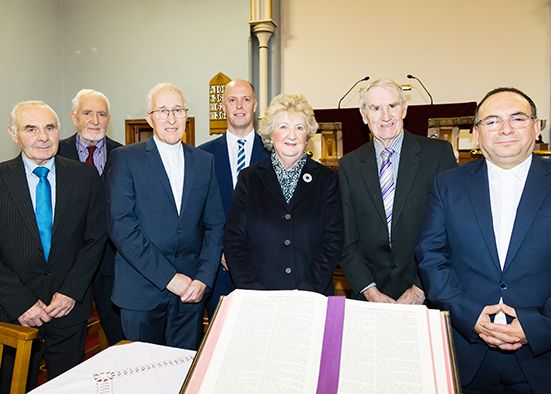Spa’s ‘healing waters’ helped in formation of Presbyterian Church
Spa’s ‘healing waters’ helped in formation of Presbyterian Church
30 November 2022

WHEN you drive or walk through Spa village today, it is difficult to believe that in the 19th century it was bustling with visitors and tourists.
You may well ask what was the big attraction? The answer is the Spa waters. These special waters were discovered to have medicinal and healing qualities due to their sulphur content. This discovery occurred during the reign of King Charles II. We don’t know the exact date, but it was sometime between 1660 and 1685.
In those days and for a century or two afterwards, news travelled very slowly and mostly by word of mouth — there were no iPhones, social media or news flashes then. As a result, it was really in the 19th century that Spa attracted the crowds. People came for a three-week stay to partake of the waters, either by drinking or bathing, during the months of May to October. There were the Assembly Rooms, the baths and hotels.
Only well-off people could afford to come to Spa for three weeks. One such person was a Belfast merchant, who was a keen churchman and who believed that the only thing missing in Spa was a church.
His name was James Robert McQuiston. He was not only wealthy, but also very generous as he paid for the building of Spa Presbyterian Church. The foundation stone was laid on July 27, 1871, and a year later, on July 16, 1872, the new church — or meeting house as it was then called — was opened and dedicated by the Right Rev William Johnston, Moderator of the General Assembly.
The following Sunday the Spa Sunday School commenced, even though it was not until two years later that Rev William Wilson, the first minister of Spa, was ordained. During his ministry (1874-79) the manse was built — a fine Victorian house, still standing and still our manse. Central heating and the wall and railings were erected during the ministry of Rev John McAdam who was minister from 1895 to 1925.
Further advances were made during the ministry of Rev McKee (1925-1945) with the installation of electric lighting and the erection of the choir room and vestry.
During the ministry of Rev Drennan (1946-1955) the Arnold Hall was built and this was largely paid for by the Arnold family, hence its name!
It was during the ministry of Rev Cecil Adams (1955-1985) that our pipe organ was installed. This ‘King of Instruments’, as the organ is commonly and rightly called, greatly enhanced worship in the church by raising to a very high level the singing of praise.
Rev John Keenan was minister from 1987 to 2005. During his ministry the Arnold Hall was renovated and extended and our now famous car boot sales were started as means of raising money for that project. The organ was also refurbished, reflecting its very important role in worship and that led to our annual antiques fairs as a means of raising money.
Finally, during the ministry of our most recent minister, Rev David Hyndman (2007-2021), PowerPoint was installed and the heating system switched from oil to gas.
What I have said so far is mostly about the history of the church building. However, we all know that the church is more than that. The church is the people. It is my fervent prayer that worship and praise to almighty God should resound from this church as one united people — united in faith, united in worship, united in fellowship, showing love and compassion to one another and, above all, united in the love of our Heavenly Father and our Saviour, Jesus Christ, to whom we give thanks for the first 150 years of worship, ministry and the preaching of the gospel in Spa.


